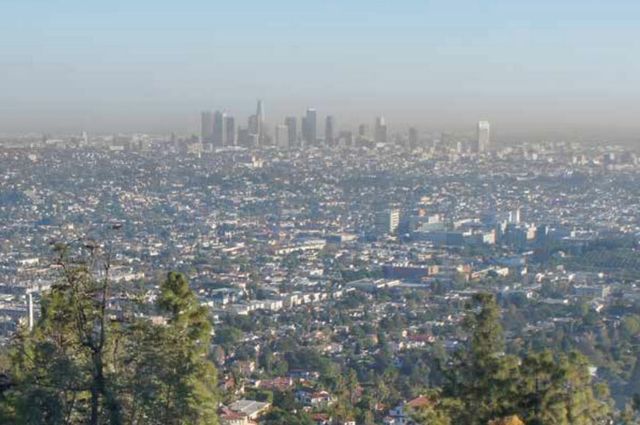
Blog |
L.A. County gets C+ from UCLA on environmental issues
Region has made progress, but dirty air, polluted water, resource inequality and lack of data still pose problems
By Alison Hewitt
Originally posted by UCLA Newsroom
UCLA today issued the first comprehensive environmental report card for Los Angeles County. The county’s overall performance marks it as an unimpressive C+ student.
The study, produced by UCLA’s Institute of the Environment and Sustainability, is the first thorough analysis of the county’s environment and is believed to be the most comprehensive environmental report card for any region in the nation. Researchers looked at 22 indicators to determine grades in six main categories — water, air, ecosystem health, waste, environmental quality of life, and energy and greenhouse gases — and analyzed publicly available data from dozens of agencies and organizations.
“Despite a strong recent history of environmental improvements, the county has a long way to go before joining the honor roll,” said Mark Gold, acting director of IoES and the project leader on the report card. “There’s tremendous room for improvement in all six environmental areas.”
Among the findings:
- Although the region’s air quality has improved, it remains among the worst in the nation and regularly fails to meet federal standards for fine-particle pollution.
- Sewage and industrial discharges largely comply with Clean Water Act requirements, but excessive levels of pollutants are found in storm water, groundwater and virtually all the region’s bodies of water.
- Despite significant progress in conserving water, the county still imports 58 percent of its water from more than 200 miles away, and the area’s per capita water use is more than twice that of urban regions in Europe and Australia.
- The county has a robust waste-recycling program but lacks data on how much is actually recycled and how much hazardous waste is produced.
- Recent decades have seen significant habitat loss, and thousands of acres of wildlands have experienced increases in the frequency of wildfires.
- Electricity consumption per capita is among the nation’s lowest for large metro areas, but much of that energy still comes from coal.
- About 20 percent of residents live in areas ranked among the worst 10 percent in California by state environmental screening scores, exposing them to higher environmental health risks.
The project was headed by Gold, who is also assistant vice chancellor for UCLA’s Sustainable LA Grand Challenge, and his Institute of the Environment and Sustainability colleagues Felicia Federico and Stephanie Pincetl, in collaboration with the Goldhirsh Foundation and the LA2050 initiative.
“We were surprised how many indicators of environmental conditions aren’t measured at all,” said Federico, the program manager for partnerships and translational science at IoES. “As a region we need to decide what environmental measures we want to track and determine how we will do so regularly. We hope this report sparks that conversation.”
UCLA’s Sustainable LA Grand Challenge efforts and city-level plans, such as Los Angeles’ Sustainability pLAn (scheduled for publication April 8 and developed partially as a response to UCLA’s “Vision 2021 LA” draft sustainability plan), are timely efforts that could guide those discussions, develop solutions and improve L.A.’s grade, according to the report.
“Climate change is starting to be felt, so we know that there is no more ‘normal’ going forward, which is why it’s so important to find a baseline now,” said Pincetl, a professor and director of the California Center for Sustainable Communities at UCLA. “This will be crucial in figuring out how to mitigate the impacts of those changes.”
UCLA’s Sustainable LA and the city’s plan are aimed at measuring the current state of the region’s environment in order to determine where more action is needed.
“UCLA’s report card fills a gap in what we know about the county,” said Tara Roth, president of the Goldhirsh Foundation. “It gives the public and policymakers evidence of where improvement is needed, as well as a framework to talk about it. Our hope is that it leads to broader decision-making and policies to improve the county as a whole, not just one community at a time.”
Twitter users can join a chat with the report’s authors at 3 p.m. on Tuesday, April 7, using the hashtag #UCLAgradesLA to ask questions and submit ideas for future report cards.
Read more about Los Angeles County’s grades in each of the six areas
